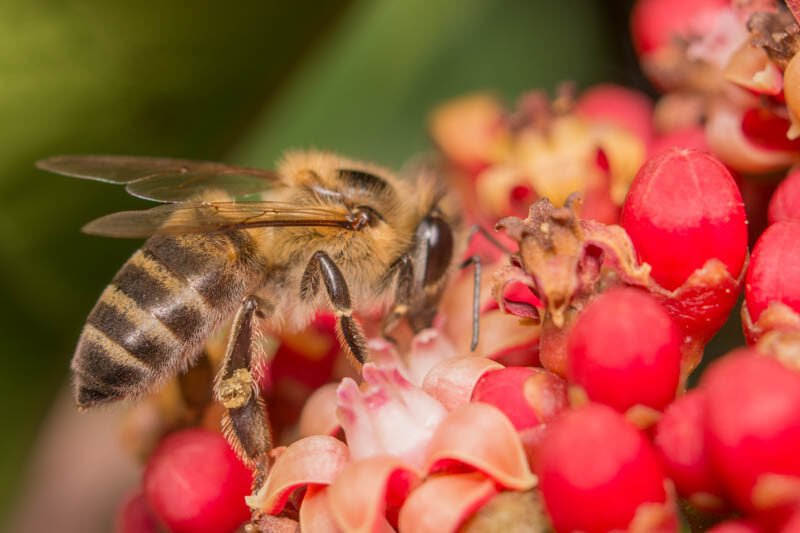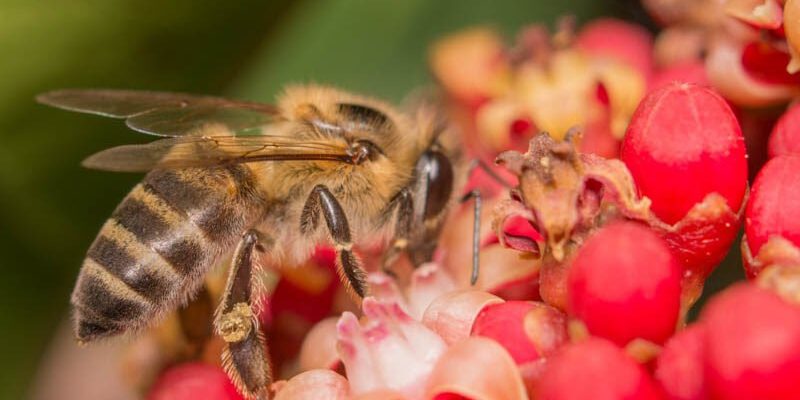
Killer bees originated from Africa but have made their way across the Americas, creating a buzz — quite literally — in the world of entomology and public health. Known for their defensive nature, they are a hybrid species that resulted from the crossbreeding of the African honey bee with European honey bees. So, what makes these bees tick? Let’s dive into their habitats and nesting behaviors to discover how they have adapted and thrived in various environments.
What Is the Natural Habitat of Killer Bees?
Killer bees prefer a variety of habitats, which is part of what makes them so adaptable. They are often found in tropical and subtropical regions, but they can also thrive in temperate climates. Think of them as the ultimate survivalists of the bee world. They’re not too picky about where they set up shop, which allows them to inhabit areas that other species might avoid.
– Forested Areas: These bees love to nest in areas where trees are abundant. They often find hollows or abandoned animal burrows to call home. The shelter of trees offers protection from the elements and potential predators.
– Urban Environments: You might be surprised, but killer bees are making their home in cities too! They can thrive in urban settings where there’s a mix of greenery and human-made structures. Roof gardens and parks are common spots for their nests.
– Grasslands and Fields: In open areas, killer bees can be found nesting underground or in shrubs. Their ability to adapt to different environments sets them apart from other species.
Killer bees have shown a remarkable capacity to establish colonies in diverse habitats. This adaptability is crucial for their survival and helps explain why they’ve spread so widely.
How Do Killer Bees Build Their Nests?
Killer bees have a unique approach to building their nests, which sets them apart from their European counterparts. They exhibit fascinating architectural skills, often constructing nests that are both functional and well-hidden.
When killer bees decide to build a nest, they’ll typically choose a secluded spot to keep their young safe from predators and environmental threats. Their nests can be built in:
– Tree Hollows: One of the most common nesting sites, offering natural protection.
– Ground: They can also dig into the surface to create underground nests, which can be harder for people or larger animals to discover.
– Man-Made Structures: Killer bees often take advantage of human spaces, nesting in attics, wall cavities, or other voids within buildings.
Interestingly, their nests are often less structured than those of other bees. You might think of a killer bee nest as a well-camouflaged clump of bees rather than a neatly arranged honeycomb. This lack of structure can make it more challenging to locate their colonies.
The Role of Environment in Nesting Behavior
The environment significantly affects how killer bees build and maintain their nests. In ideal conditions, they can establish large colonies quickly, but when things get tough, they have to adapt.
– Resource Availability: If there are plenty of flowers and food sources nearby, killer bees can build larger nests and support more members. They thrive when flowers are abundant, which is why they prefer environments with vibrant ecosystems.
– Predation Pressure: In areas with many predators, killer bees may choose more concealed nesting sites to keep their young safe. You might find them tucked away in the crevices of urban structures or well-hidden in dense vegetation.
– Weather Conditions: Extreme weather can influence their nesting sites too. During rainy seasons, they may seek drier locations, while hot weather can drive them to shaded areas.
Killer bees are masters of adaptation, which is why they can survive and even flourish in various environments. Their adaptability is key to understanding their behavior and potential impacts on local ecosystems.
Nesting Behavior and Colony Defense
Killer bees are known for their aggressive defense of their nests. When it comes to protecting their colonies, they can be quite formidable. This behavior is critical for their survival, as it helps them guard their young and food resources.
– Aggressive Interactions: If they feel threatened, killer bees can unleash a swarm to defend their nests. You might think of it like a tiny army rallying to protect their home. Even minor disturbances can trigger a defensive response.
– Swarming Behavior: When the colony becomes too large, killer bees may swarm to establish a new nest. This is a natural part of their reproduction process, allowing them to spread their genes and find new habitats.
Their aggressive nature is part of what makes killer bees infamous. While it contributes to their survival, it can lead to dangerous encounters for unsuspecting humans or animals who unintentionally wander too close.
Why Understanding Killer Bees Matters
Gaining insight into the habitat and nesting behavior of killer bees is crucial, especially in regions where they’ve established colonies. Their nature can impact both ecological systems and human activities.
For example:
– Pollination: Killer bees are excellent pollinators. Understanding their nesting behavior helps us recognize their role in maintaining healthy ecosystems.
– Public Safety: As we’ve seen, their aggressive behavior can pose threats to people and pets. Awareness can help communities manage their presence and reduce risks.
– Biodiversity: Killer bees contribute to biodiversity, and recognizing their impact can help scientists monitor and conserve ecological balance.
Here’s the thing: knowledge is power. By understanding killer bees, we can better coexist with these fascinating creatures while ensuring safety and ecological health.
Killer bees, or Africanized honey bees, are a striking example of how adaptability can shape a species’ success. Their unique nesting behaviors and habitats highlight their remarkable resilience. From tree hollows to urban environments, they demonstrate an ability to thrive in diverse conditions. Understanding their nesting behavior and eco-friendly roles can help us appreciate these creatures and their place in our ecosystems.
As we navigate our interactions with killer bees, a little understanding goes a long way. Whether it’s recognizing their impressive skills as pollinators or respecting their defensive nature, we can learn to coexist with these remarkable bees. So, the next time you see a bee buzzing nearby, remember that they play an essential role in our world — even if they are the infamous killer bee!

